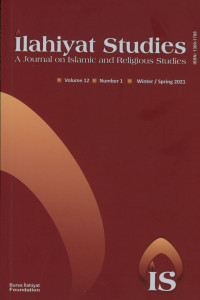Mysticism and Philosophy in al-Andalus: Ibn Masarra, Ibn al-ʿArabī and the Ismāʿīlī Tradition, by Michael Ebstein
Mysticism and Philosophy in al-Andalus: Ibn Masarra, Ibn al-ʿArabī and the Ismāʿīlī Tradition, by Michael Ebstein
First Paragraph: As its title indicates, this is a thesis which sets out to identify the many features of the mystical writings of the two Andalusians, Ibn Masarra (883-931) and Ibn al-ʿArabī (1165-1240), which they have in common with the mythical and Neoplatonic cosmogonies and cosmologies in the assortment of works from the late ninth and tenth centuries belonging to what Michael Ebstein calls the Ismāʿīlī tradition. His purpose is to demonstrate the causal connection between the two sets of compositions, and in so doing to account for the difference between the mysticism of the two Westerners and that of Sufis writing in the East. It is a task meticulously carried out under five chapter headings: the Word of God and the Divine Will; Letters; the Friends of God; the Perfect Man: from Shīʿī sectarianism to universal humanism; and Parallel Worlds. The first deals with the problem of relating a pre-Islamic concept of creation through a descending order of emanations with a Creator by definition above and beyond His creation. The second describes the correlation between the hierarchical structure of this creation and the twenty-eight letters of the Arabic alphabet. The third considers the concept of the Friends of God, those who in every generation ensure the guidance of God in succession to His Prophets, specifically Muḥammad, a notion associated in Shīʿism with the Imām and his faithful, otherwise with the individual saint. In the fourth chapter this concept of the Friend of God runs into that of the Perfect Man, a Platonic Idea variously embodied in such Friends as the Prophets and Imāms, but existing at a level of creation immediately below God, and at a lower level bridging the divide between the lower corporeal and the upper spiritual world. That in turn leads into the final chapter, the Parallel Worlds of the macrocosm and the microcosm, in which the correspondence between the two leads to the ascent of the mind through the contemplation of its signs to the understanding of the universe and knowledge of its Creator.
Keywords:
Mysticism, Philosophy, al-Andalus, Ibn Masarra, Ibn al-ʿArabī Ismāʿīlī Tradition,
- ISSN: 1309-1786
- Başlangıç: 2010
- Yayıncı: Bursa İlahiyat Vakfı
